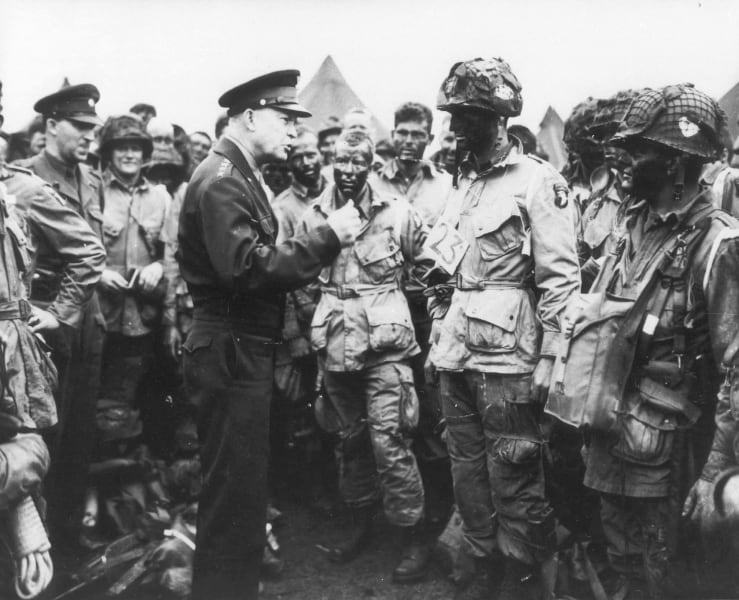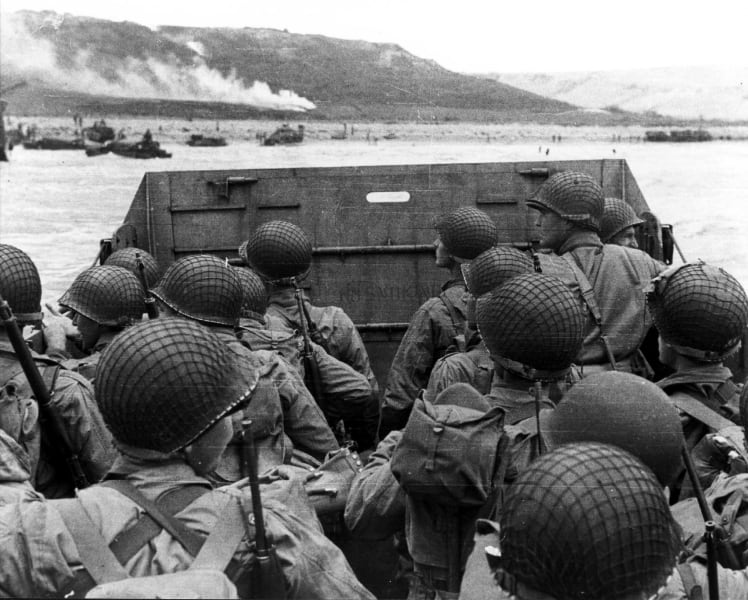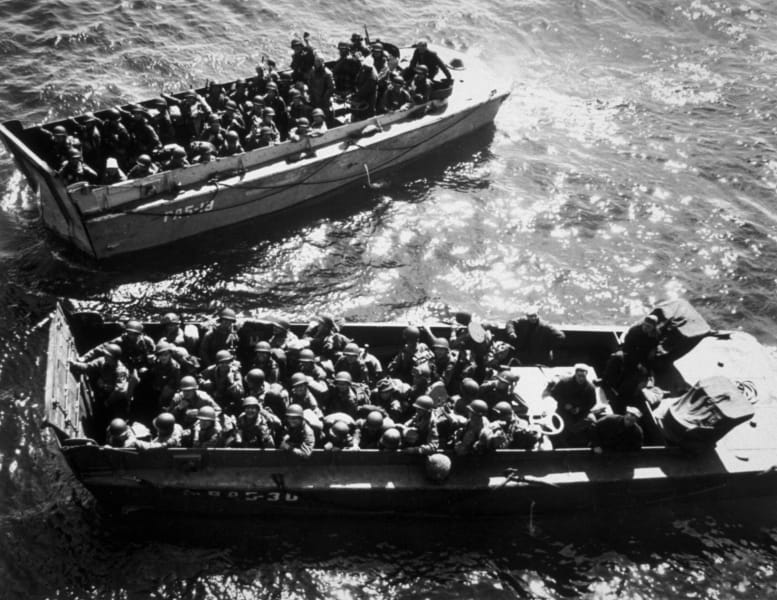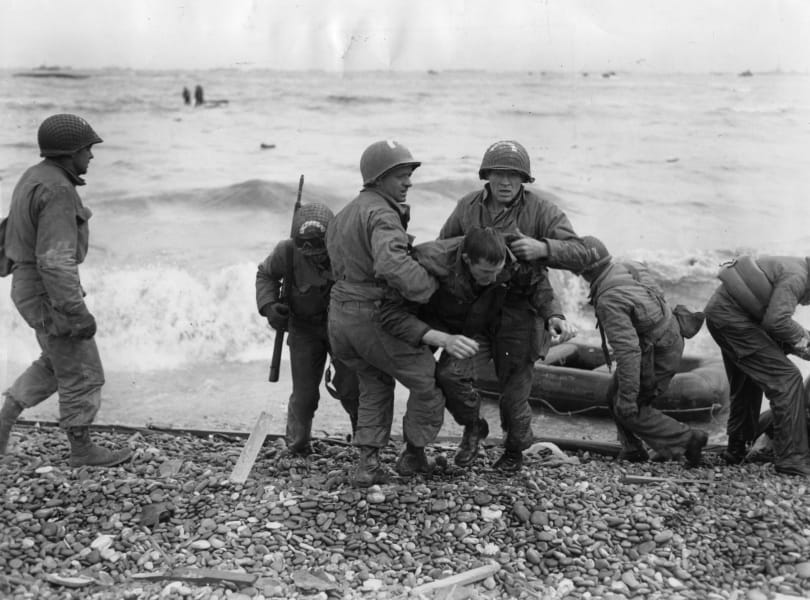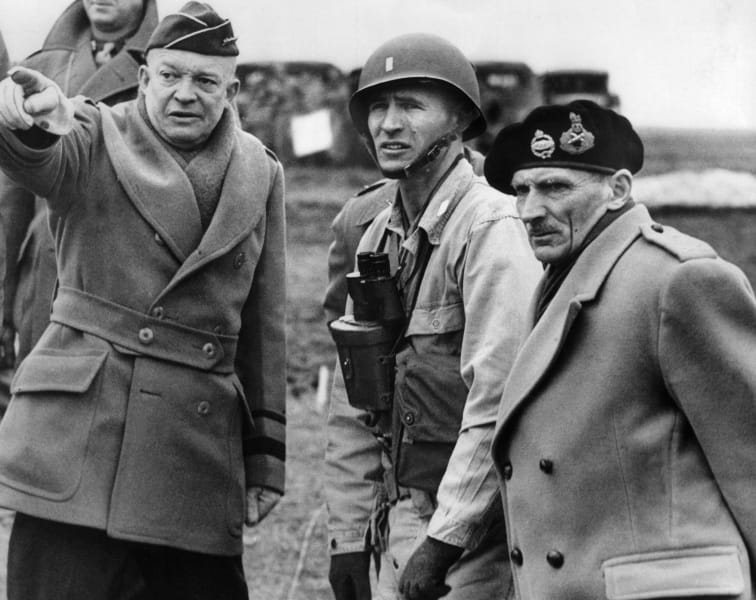Share
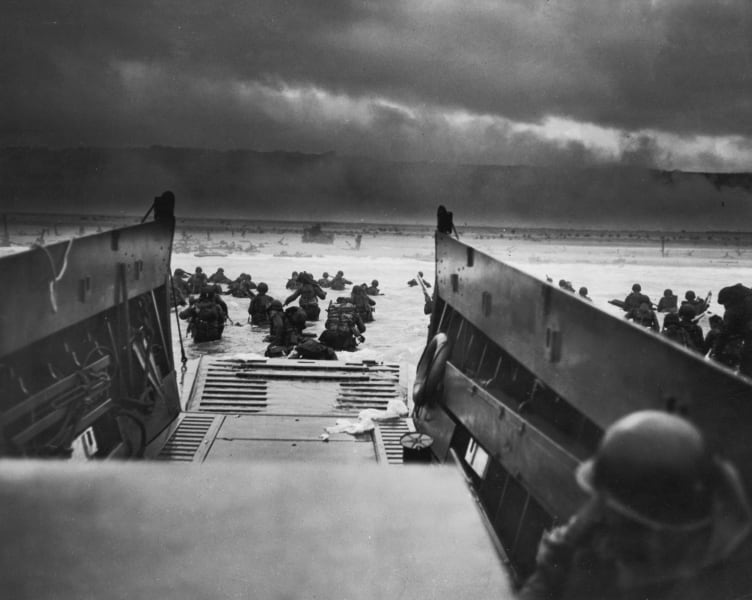

1 of 15
American troops storm the beaches of Normandy, France, on June 6, 1944. D-Day was the largest amphibious invasion in history. More than 160,000 Allied troops -- about half of them Americans -- invaded Western Europe, overwhelming German forces in an operation that proved to be a turning point in World War II. Robert F Sargent/Getty Images
U.S. troops wait to disembark a landing craft on D-Day. Keystone/Getty Images
American troops help their injured comrades after their landing craft was fired upon. Allied forces secured the beaches at a cost of about 10,000 casualties. Fox Photos/Getty Images
French commandos equipped with bicycles disembark from their landing craft after Allied forces stormed the Normandy beaches. Germans rained mortars and artillery down on Allied troops, killing many before they could even get out of their boats. Fighting was especially fierce at Omaha Beach, where Nazi fighters nearly wiped out the first wave of invading forces and left the survivors struggling for cover. AFP/Getty Images
The British Army's 50th Infantry Division lands on beaches in Normandy. This photograph is part of an exhibit in London at the Imperial War Museum. courtesy Imperial War Museum
An aerial view shows 32 intentionally sunk American merchant ships that served as a breakwater as well as anti-aircraft platforms. AFP/Getty Images
Traffic builds up on the beach and on the road leading to Le Hamel, France, during the landing of the 50th Infantry Division. courtesy Imperial War Museum
U.S. troops and vehicles are ready to disembark. D-Day was one of history's most consequential and gut-wrenching battles. AFP/Getty Images
A sign outside of Trinity Church in New York invites worshippers to pray for Allied victory in the D-Day invasion. FPG/Hulton Archive/Getty Images
Commandos with the Royal Navy's 4th Special Service Brigade advance to Juno Beach at Saint-Aubin-sur-mer. courtesy Imperial War Museum
Lance Cpl. Walter Ray of the British Army shares a bottle of rum he found floating in the sea. courtesy Imperial War Museum
U.S. Gen. Dwight D. Eisenhower, left, supreme commander of the Allied forces, and British Field Marshal Bernard Montgomery, right, discuss plans at an undisclosed location in June 1944. The Allies went to elaborate lengths to maintain secrecy and mislead Adolf Hitler. They employed double agents and used decoy tanks and phony bases in England to hide actual troop movements. AFP/Getty Images
Eisenhower gives the order of the day to paratroopers in England. "Full victory -- nothing else" was the command just before they boarded their planes to participate in the first wave. The invasion -- code-named Operation Overlord -- had been brewing for more than two years. U.S. National Archives and Records
British troops pose for a photograph with a French woman in La Breche d'Hermanville. courtesy Imperial War Museum
U.S. troops huddle behind the protective front of their landing craft as it nears a beachhead. Smoke in the background is naval gunfire, giving cover to troops on land. U.S. Army
